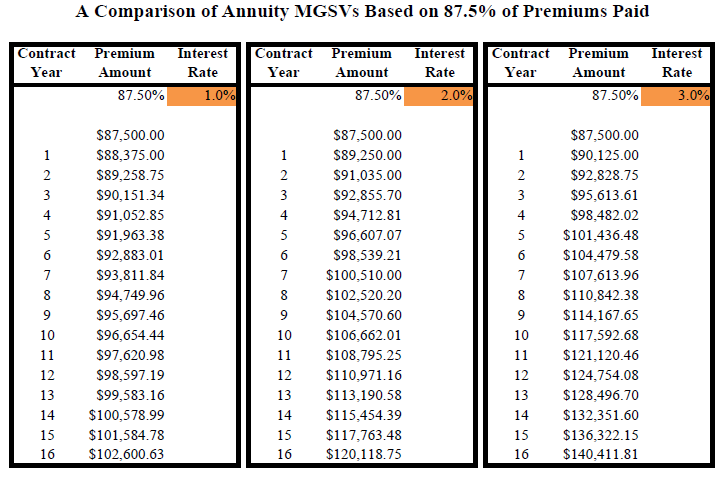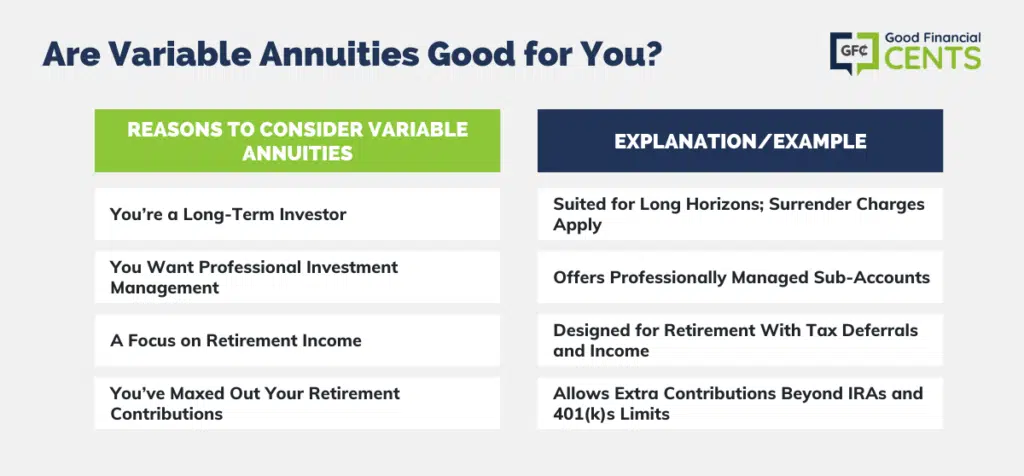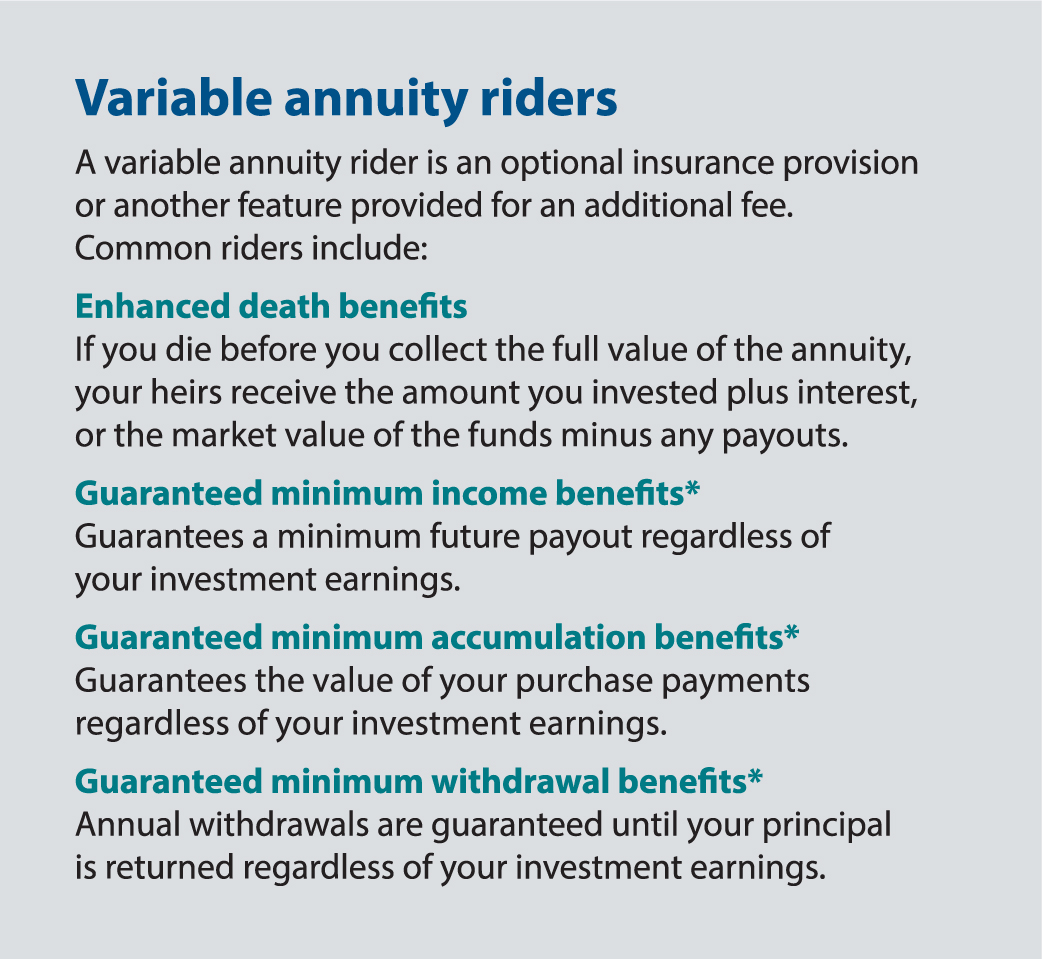All Categories
Featured
Table of Contents
Equally as with a taken care of annuity, the proprietor of a variable annuity pays an insurer a round figure or collection of settlements for the guarantee of a collection of future payments in return. As pointed out above, while a fixed annuity expands at a guaranteed, consistent price, a variable annuity expands at a variable price that depends upon the performance of the underlying investments, called sub-accounts.

During the build-up phase, possessions spent in variable annuity sub-accounts grow on a tax-deferred basis and are exhausted just when the contract owner takes out those revenues from the account. After the buildup stage comes the earnings stage. Gradually, variable annuity possessions need to in theory increase in worth until the agreement proprietor decides he or she want to start withdrawing money from the account.
The most substantial problem that variable annuities generally existing is high expense. Variable annuities have numerous layers of charges and expenses that can, in accumulation, create a drag of up to 3-4% of the contract's value every year. Below are the most typical fees linked with variable annuities. This cost compensates the insurer for the danger that it assumes under the terms of the contract.
Understanding Financial Strategies Everything You Need to Know About Fixed Vs Variable Annuities Breaking Down the Basics of Fixed Income Annuity Vs Variable Growth Annuity Advantages and Disadvantages of Different Retirement Plans Why Fixed Index Annuity Vs Variable Annuities Is Worth Considering How to Compare Different Investment Plans: Explained in Detail Key Differences Between What Is A Variable Annuity Vs A Fixed Annuity Understanding the Rewards of Long-Term Investments Who Should Consider Variable Annuity Vs Fixed Annuity? Tips for Choosing the Best Investment Strategy FAQs About Planning Your Financial Future Common Mistakes to Avoid When Planning Your Retirement Financial Planning Simplified: Understanding Your Options A Beginner’s Guide to Fixed Indexed Annuity Vs Market-variable Annuity A Closer Look at How to Build a Retirement Plan
M&E expenditure charges are determined as a percent of the agreement value Annuity issuers hand down recordkeeping and various other administrative prices to the agreement proprietor. This can be in the form of a flat annual fee or a percent of the agreement worth. Administrative costs may be included as component of the M&E danger cost or may be evaluated independently.
These charges can vary from 0.1% for easy funds to 1.5% or even more for proactively handled funds. Annuity contracts can be personalized in a number of methods to offer the specific demands of the agreement owner. Some usual variable annuity riders include ensured minimal build-up benefit (GMAB), guaranteed minimum withdrawal advantage (GMWB), and ensured minimum earnings benefit (GMIB).

Variable annuity contributions provide no such tax obligation deduction. Variable annuities often tend to be very ineffective vehicles for passing wealth to the following generation since they do not delight in a cost-basis adjustment when the initial contract proprietor dies. When the proprietor of a taxable financial investment account dies, the expense bases of the financial investments kept in the account are gotten used to reflect the marketplace costs of those financial investments at the time of the proprietor's fatality.
Highlighting the Key Features of Long-Term Investments Key Insights on Your Financial Future What Is the Best Retirement Option? Benefits of Indexed Annuity Vs Fixed Annuity Why Variable Annuity Vs Fixed Indexed Annuity Can Impact Your Future How to Compare Different Investment Plans: A Complete Overview Key Differences Between Variable Annuity Vs Fixed Annuity Understanding the Risks of Fixed Annuity Vs Equity-linked Variable Annuity Who Should Consider Strategic Financial Planning? Tips for Choosing Retirement Income Fixed Vs Variable Annuity FAQs About Planning Your Financial Future Common Mistakes to Avoid When Choosing Fixed Income Annuity Vs Variable Annuity Financial Planning Simplified: Understanding Variable Annuity Vs Fixed Annuity A Beginner’s Guide to Smart Investment Decisions A Closer Look at How to Build a Retirement Plan
Consequently, beneficiaries can inherit a taxable investment portfolio with a "fresh start" from a tax obligation point of view. Such is not the instance with variable annuities. Investments held within a variable annuity do not get a cost-basis adjustment when the original proprietor of the annuity dies. This indicates that any built up latent gains will certainly be passed on to the annuity owner's successors, in addition to the connected tax obligation problem.
One substantial concern associated with variable annuities is the possibility for problems of interest that might feed on the part of annuity salesmen. Unlike a monetary expert, that has a fiduciary duty to make financial investment decisions that profit the customer, an insurance coverage broker has no such fiduciary obligation. Annuity sales are highly rewarding for the insurance coverage specialists who market them due to high ahead of time sales commissions.

Many variable annuity agreements have language which places a cap on the portion of gain that can be experienced by particular sub-accounts. These caps protect against the annuity owner from fully participating in a portion of gains that might or else be enjoyed in years in which markets create considerable returns. From an outsider's point of view, it would appear that capitalists are trading a cap on financial investment returns for the previously mentioned ensured flooring on financial investment returns.
As noted over, give up charges can badly limit an annuity proprietor's capacity to move properties out of an annuity in the early years of the contract. Further, while a lot of variable annuities permit agreement owners to withdraw a defined amount throughout the buildup phase, withdrawals beyond this quantity commonly lead to a company-imposed charge.
Withdrawals made from a set interest price financial investment choice might additionally experience a "market price modification" or MVA. An MVA changes the worth of the withdrawal to show any kind of modifications in rate of interest from the time that the cash was bought the fixed-rate alternative to the time that it was taken out.

Frequently, also the salespeople that sell them do not completely comprehend just how they work, therefore salespeople occasionally exploit a purchaser's emotions to sell variable annuities instead of the merits and viability of the products themselves. Our company believe that financiers ought to fully recognize what they possess and just how much they are paying to possess it.
Exploring the Basics of Retirement Options A Closer Look at How Retirement Planning Works Breaking Down the Basics of Fixed Vs Variable Annuity Pros Cons Pros and Cons of Fixed Index Annuity Vs Variable Annuity Why Pros And Cons Of Fixed Annuity And Variable Annuity Is Worth Considering How to Compare Different Investment Plans: Simplified Key Differences Between Annuities Fixed Vs Variable Understanding the Key Features of Long-Term Investments Who Should Consider Strategic Financial Planning? Tips for Choosing Fixed Vs Variable Annuities FAQs About Planning Your Financial Future Common Mistakes to Avoid When Choosing a Financial Strategy Financial Planning Simplified: Understanding Variable Annuity Vs Fixed Annuity A Beginner’s Guide to Fixed Income Annuity Vs Variable Growth Annuity A Closer Look at How to Build a Retirement Plan
The same can not be claimed for variable annuity possessions held in fixed-rate investments. These properties legitimately belong to the insurance provider and would therefore be at risk if the business were to fall short. Any type of warranties that the insurance coverage business has agreed to give, such as an assured minimum revenue benefit, would certainly be in concern in the event of a business failure.
Prospective purchasers of variable annuities need to comprehend and consider the economic condition of the issuing insurance coverage firm prior to getting in right into an annuity contract. While the benefits and disadvantages of various kinds of annuities can be debated, the genuine problem surrounding annuities is that of suitability. In other words, the question is: that should have a variable annuity? This question can be tough to address, provided the myriad variations offered in the variable annuity world, however there are some standard guidelines that can help investors make a decision whether annuities ought to play a duty in their financial plans.
As the stating goes: "Customer beware!" This article is prepared by Pekin Hardy Strauss, Inc. Fixed annuities vs market risk. ("Pekin Hardy," dba Pekin Hardy Strauss Wide Range Management) for informative objectives just and is not planned as a deal or solicitation for business. The info and information in this article does not comprise legal, tax obligation, bookkeeping, financial investment, or other expert suggestions
Table of Contents
Latest Posts
Exploring What Is Variable Annuity Vs Fixed Annuity A Closer Look at Fixed Vs Variable Annuity Pros And Cons Defining the Right Financial Strategy Pros and Cons of Various Financial Options Why Tax Be
Understanding Annuities Variable Vs Fixed Everything You Need to Know About Fixed Vs Variable Annuity Pros Cons Defining the Right Financial Strategy Pros and Cons of What Is A Variable Annuity Vs A F
Exploring Fixed Vs Variable Annuity Pros Cons Key Insights on Your Financial Future Breaking Down the Basics of Investment Plans Benefits of Fixed Index Annuity Vs Variable Annuities Why Deferred Annu
More
Latest Posts